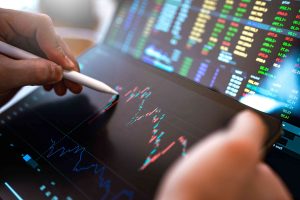
Technical analysis is the study of price fluctuations to exploit those patterns for your gain. With Asian markets opening much earlier than North American ones, it would be helpful if traders in Asia mastered technical analysis so they could have a substantial advantage over their counterparts across the Pacific.
Types of technical analysis
The knowledge that technical analysis seeks to provide is divided into understanding market psychology and recognizing past market trends.
Understanding market psychology
First of all, technical analysis is based on one fundamental principle: in the short term, stock and commodity prices follow trends created by mass-market psychology. Technical trading involves using these psychological urges to predict the short-term movement and use this prediction for your benefit.
Technical traders believe that prices reflect everything about future expectations of a company’s earnings potential, so when there is good news about a company or industry, it will be quickly priced into the market. This means that after some time, even if the positive events turn out to have been false or greatly exaggerated, they can still cause a significant fluctuation in price called “new information” because the general public has now become aware of the information.
Chart reading
When people think about technical analysis, they usually think of studying charts until they find some pattern before another period. This type of technical trading is called “chart-reading”, but chart reading should not be seen as merely an attempt at finding patterns in historical prices because certain traits within the markets provide traders with insight into the future.

Pattern recognition
Another major principle that technical trading is based on is that history tends to repeat itself – trends that have been seen before tend to happen again in similar situations because human psychology does not change much over time. Technical traders use this to their advantage by comparing charts of price movements with “standard” ones to spot trends faster. This is called “pattern recognition”, but the patterns are only helpful if you know how prices have behaved in the past during each stage of a trend because knowing where we currently stand within a trend makes it easier to predict what will happen next when it ends.
The three types of analysis that technical traders use for pattern recognition are chart patterns, indicators, and oscillators.
Chart patterns
Chart patterns such as Head and Shoulders or Wedges tend to form at the ends of trends before the reversal. Therefore people who identify them beforehand can get out early enough before any losses occur since they are pretty reliable indicators of trends reversing.
Indicators
Indicators work by measuring the strength of a trend to give you an idea of its heading. For example, if prices have been going up steadily for the past six months, then RSI will be high or at least higher than usual because it measures how much upward momentum is compared to downward.

Oscillators
Oscillators measure overbought and oversold conditions in markets which tend to happen near turning points; therefore, they can make good non-directional trading signals that provide some indication as to whether it’s time to buy or sell but not when.
Buying and selling contracts for differences (CFDs)
Trading using technical analysis can also be done by buying and selling contracts for difference (CFDs). CFDs are financial derivatives that allow you to trade the price movements of the assets they represent without actually owning them.
Finally
A growing number of traders in Asia are using technical analysis because it gives them an upper hand over other types of investors who rely on fundamental analysis and market news manipulated by corporations and governments. Even though using technicals makes trading more straightforward, knowing how and what to look for (and knowing when not to trade) takes practice and experience, which is something that no book or course can provide. Beginner traders are advised to use an experienced and reputable Saxo forex broker before starting their investment journey.






